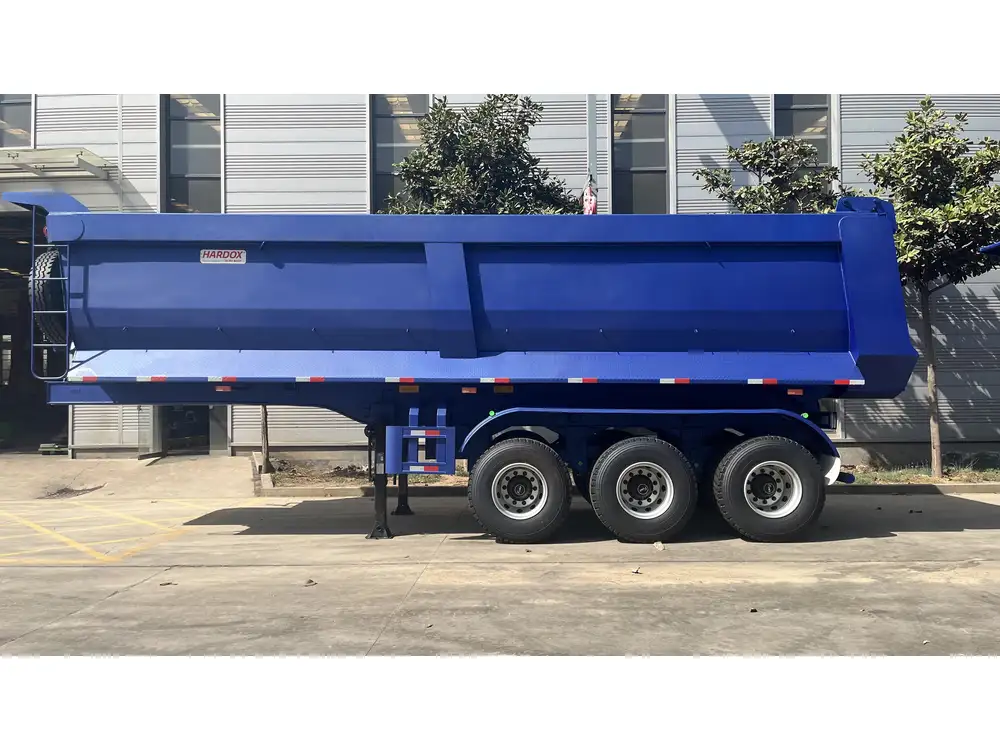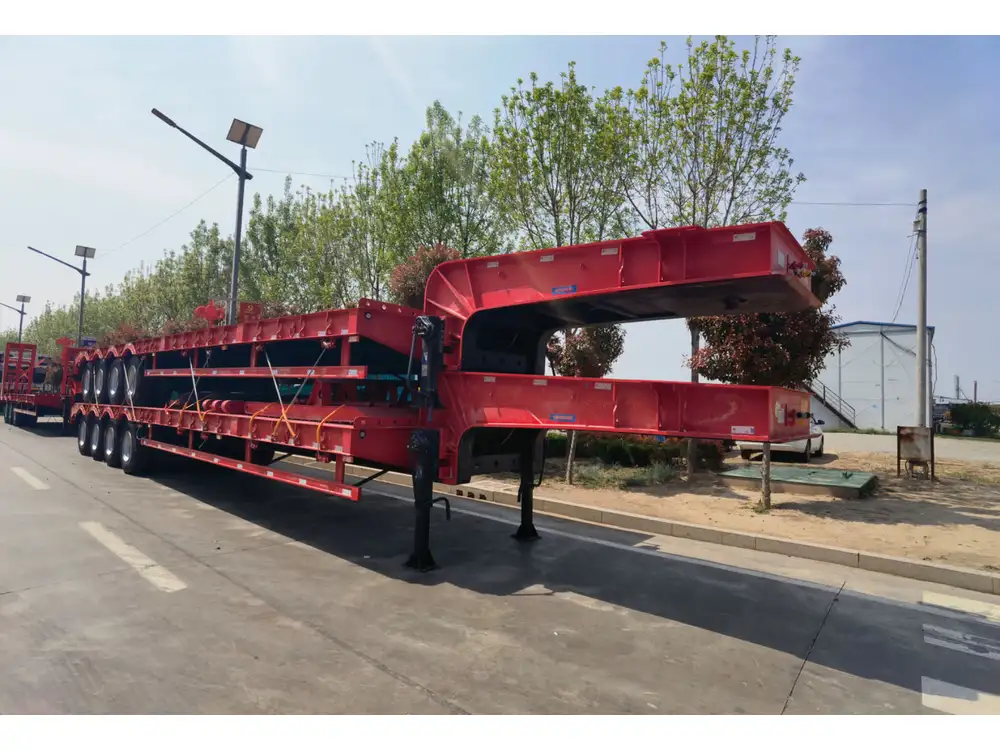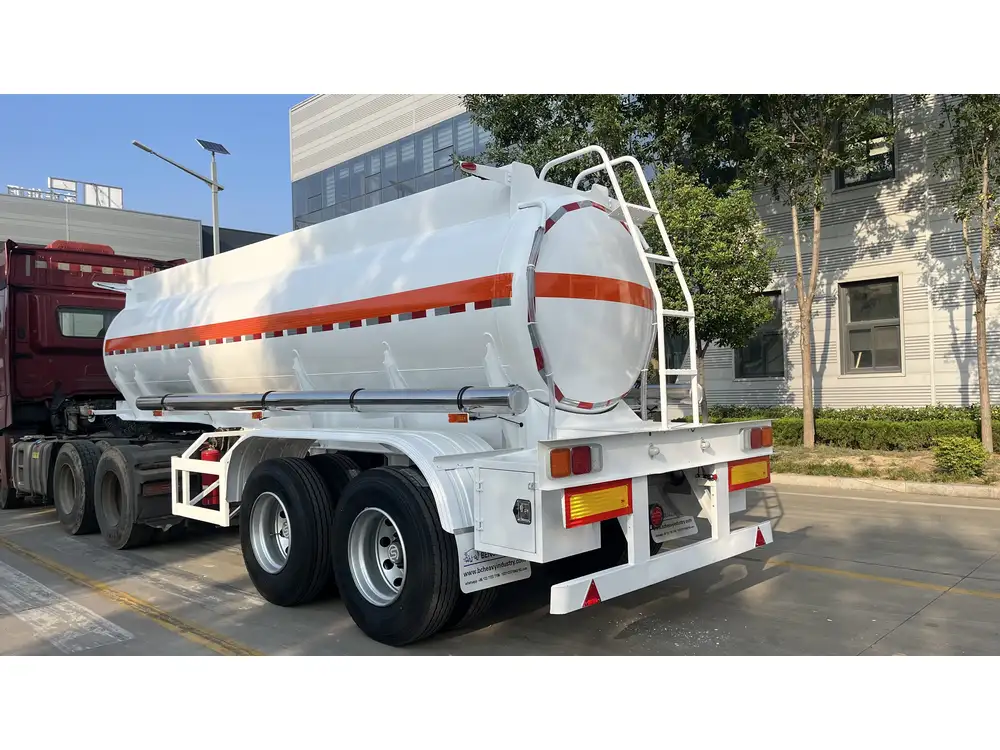When it comes to operating semi-trailers, understanding fuel capacity is key. This guide delves into the intricacies of diesel tank capacities, the factors influencing them, and practical considerations for fleet managers and operators alike.
Diesel Tank Capacity of Semi-Trailers
What is the Average Diesel Capacity?
The average diesel fuel tank capacity for semi-trailers is generally between 100 to 300 gallons. The specific capacity may vary based on the type and configuration of the truck. Here’s a quick breakdown:
| Type of Semi-Trailer | Typical Fuel Capacity |
|---|---|
| Standard Semi-Truck | 150 to 250 gallons |
| Heavy-Duty Semi-Truck | 200 to 300 gallons |
| Specialized Trailers | 100 to 200 gallons |
Larger trucks designed for long-haul operations generally have larger fuel tanks to minimize refueling stops. This allows for increased efficiency, longer trips, and the ability to carry heavier loads without the constant interruption of refueling.

Factors Influencing Diesel Tank Capacity
Several factors contribute to the differences in diesel tank capacities across various semi-trailers:
Truck Type:
- Day Cab vs. Sleeper Cab: Day cabs, which are intended for short-haul trips, might feature smaller tanks as compared to sleeper cabs, which are designed for long-distance travel and more extensive fuel capacity.
Weight Limitations:
- Semi-trailer trucks adhere to strict regulations regarding weight limits. The size of the diesel tank must balance with the truck’s weight when loaded. A larger tank adds weight, potentially reducing the payload.
Route and Distance:
- For regional haulers taking shorter routes, a smaller fuel tank suffices. In contrast, long-haul trucks benefit from larger tanks to reduce downtime for refueling.
Manufacturer Specifications:
- Different manufacturers offer varying specifications regarding tank capacities based on design philosophies, fuel efficiency goals, and customer requirements.
Customization Options for Diesel Tanks
Many manufacturers provide customizable options for diesel tanks. Knowing what choices are available can greatly impact operational efficiency:
Dual Fuel Tanks: Some trucks come with dual fuel tanks, effectively doubling the fuel capacity. This is particularly advantageous for long-haul operations.
Aluminum vs. Steel Tanks: Each material has its pros and cons. Aluminum tanks are lighter, enhancing payload capacity, while steel tanks provide durability and strength.
Tank Configuration: The positioning and shape of the tank can also be customized to fit specific truck designs and enhance aerodynamics, thereby increasing fuel efficiency.
Operational Considerations for Diesel Capacity
Understanding diesel tank capacity is just the beginning. Operational strategies can further optimize performance:

Fuel Efficiency Strategies
Regular Maintenance:
- Ensure that the truck’s fuel system is regularly maintained. Clogged filters and leaks can reduce fuel efficiency dramatically.
Route Planning:
- Planning routes that minimize stops and optimize highway travel can lead to significant savings on fuel costs.
Weight Management:
- Always be aware of the truck’s payload. Overloading not only violates regulations but also leads to increased fuel consumption.
Driving Practices:
- Train drivers in fuel-efficient driving practices. Smooth acceleration and deceleration, maintaining optimal speed, and avoiding excessive idling can substantially improve fuel economy.
Monitoring Fuel Levels and Usage
Investing in technology can help keep track of diesel levels and consumption efficiently. Here are a few methods:
GPS and Fuel Management Software: This technology can provide real-time data regarding fuel levels, helping to avoid running out during long trips.
Telematics Systems: These offer integrated solutions to monitor driving patterns, allowing for adjustments that can enhance fuel efficiency.
Manual Logs: Keeping a manual log of fuel consumption can highlight trends and identify inefficiencies over time.
Environmental Considerations Related to Diesel Usage
With growing emphasis on environmental responsibility, it’s crucial for fleet managers and operators to consider the ecological impacts of fuel consumption:
Emissions Regulations: Different regions impose varying regulations regarding emissions. Understanding these can help operations stay compliant while minimizing environmental impact.
Alternative Fuels: While diesel remains the standard, exploring alternative fuel options such as biodiesel, electric, or hybrid systems can reduce carbon footprints.

Financial Implications of Diesel Capacity and Usage
The cost of diesel fuel is a significant portion of operational expenses. Understanding how capacity and usage affect finances is essential:
Cost of Refueling
Price Per Gallon Fluctuations: Keeping track of diesel prices can lead to strategic refueling times, optimizing when and where you fill up to ensure maximum savings.
Volume Discounts: Building relationships with fuel suppliers can lead to discounts based on purchasing volume, benefiting operations with larger fuel capacities.
Fuel Tax Considerations
Federal and State Fuel Taxes: Different regulations apply, and understanding how these taxes work for diesel can minimize a fleet’s tax burden.
Fuel Tax Credits: Explore available tax credits for using alternative fuels or efficient technologies that can further reduce operational costs.

Conclusion: Maximizing the Benefits of Diesel Tanks in Semi-Trailers
Understanding the capacity of diesel tanks in semi-trailers is essential for improving operational efficiency, reducing costs, and ensuring compliance with regulations. By digging into the nuances of tank specifics, customizing for specific operational needs, and implementing smart management strategies, fleet managers can enhance performance while considering environmental factors.
Quick Reference Guide
| Key Aspect | Details |
|---|---|
| Average Tank Capacity | 100 to 300 gallons, depending on type |
| Customization Options | Dual tanks, aluminum vs. steel, shapes |
| Efficiency Strategies | Maintenance, route planning, weight management, driving practices |
| Monitoring Tools | GPS systems, telematics, manual logs |
| Environmental Factors | Emission regulations, alternative fuels |
| Financial Implications | Cost of fuel, tax considerations |
Suggested Further Reading
For an even deeper understanding of optimizing semi-trailer operations regarding diesel usage, consider exploring additional topics such as:
- Innovations in Fuel Efficiency in the Trucking Industry
- The Future of Alternative Fuels in Transportation
- Advanced Maintenance Protocols for Semi-Trailer Trucks
By delving deeper, industry professionals can arm themselves with the knowledge needed to not only keep operations running smoothly but also sustainably, paving the way for a future where efficiency and environmental responsibility go hand in hand.
For any questions or more detailed analysis, don’t hesitate to reach out. Your operations can benefit from targeted insights that take diesel tank capacity into a new realm of operational excellence.



